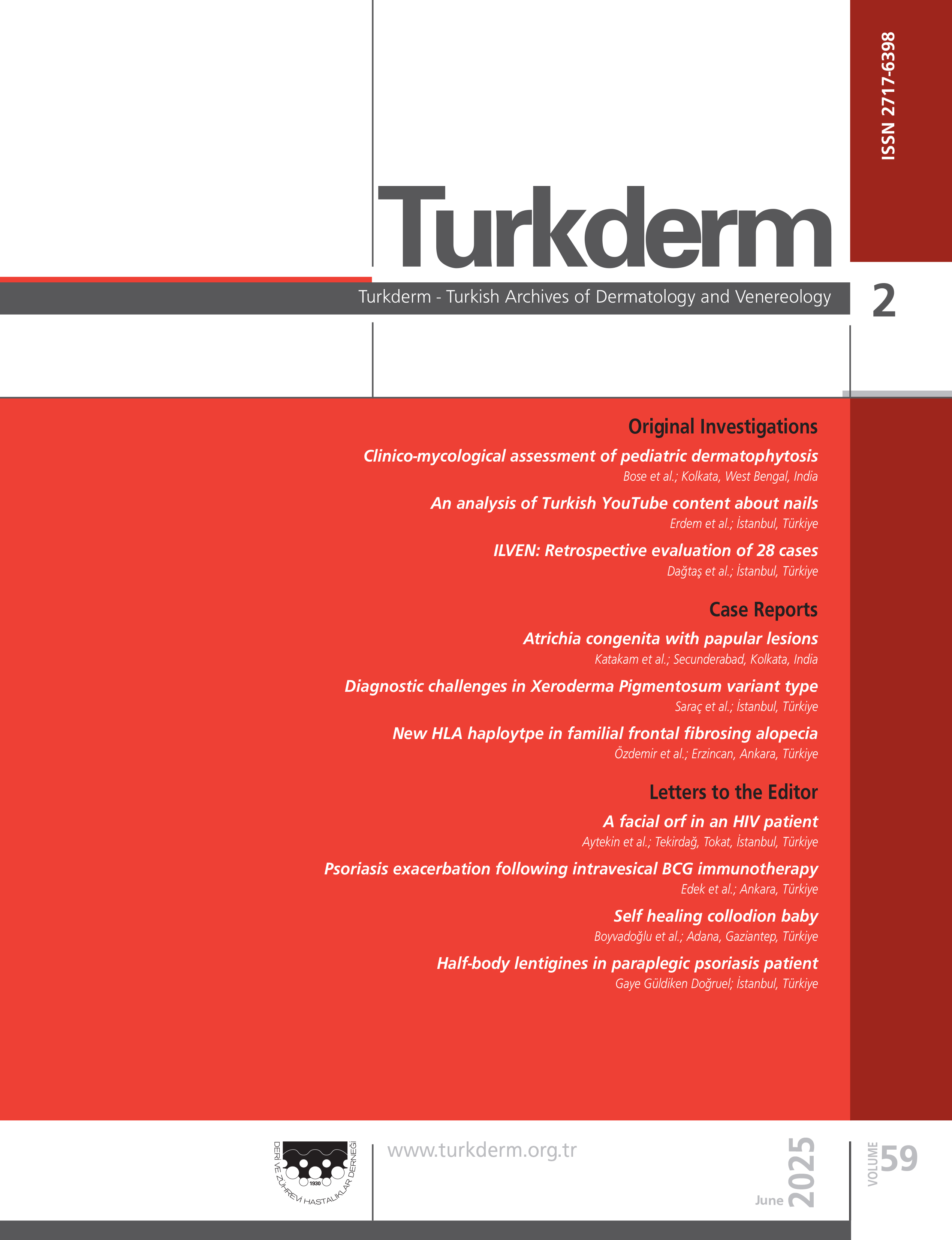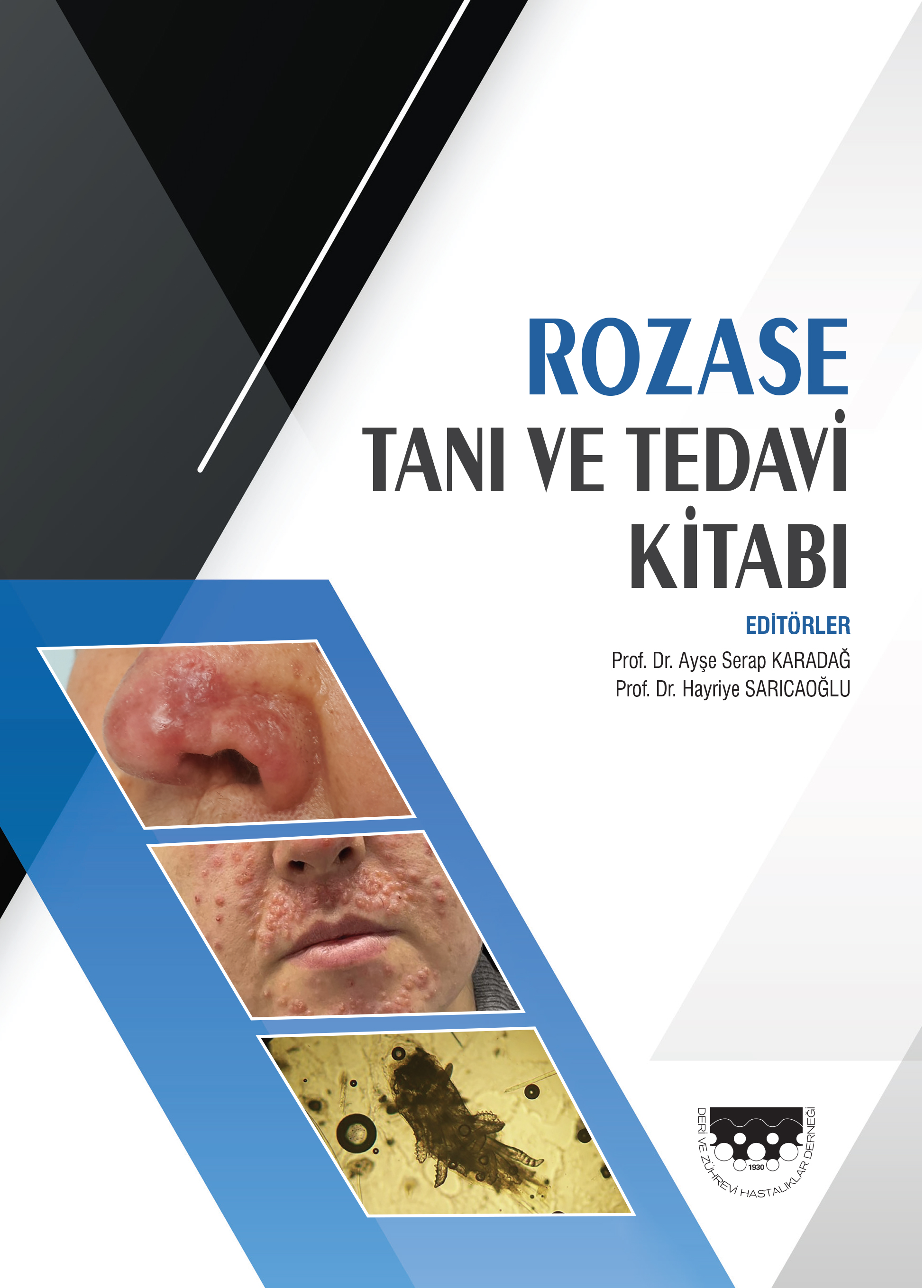The prognostic factors in cutaneous malignant melanoma
Nur Büyükpınarbaşılı1, Cuyan Demirkesen1, Oya Oğuz2, Gültekin Kaner1Background and design: The incidence of cutaneous malignant melanoma is increasing in the world. Over the past two decades, the principal clinical and pathologic prognostic factors of melanoma that predict the risk of metastasis and survival rates have been delineated. In our study, we evaluated prognostic factors and their effect on survival rates in cutaneous malignant melanoma. Materials and Methods: In this retrospective study, we analyzed HE stained slides of 93 cases which were diagnosed at Cerrahpafla Faculty of Medicine, Pathology Department between the years 1992-2000. We have evaluated 21 prognostic parameters which were sex, age, anatomic location of the primary lesion, tumor thickness, level of invasion, ulceration, mitotic activity, histologic subtype, tumor infiltrating lymphocytes (TIL), peritumoral lymphocytes, growth phase, regression, local recurrence, microscopic satellitosis, in-transit metastasis, invasion of blood vessel, lymphatic and perineural tissue, pre-existent naevus, nodal metastases and organ metastases. Results: In our study we have found mild male predominance and superficial spreading malignant melanoma
preponderance. In our study cutaneous malignant melanomas were more frequently located on the extremities in females and on the trunk in males. By Cox regression analysis, Breslow thickness was the most important and independent prognostic factor. Breslow thickness was correlated with age, ulceration, level of invasion, mitotic activity. On the other hand, there was an inverse correlation between thickness and the amount of the TIL. The second independent prognostic factor was ulceration. Cutaneous malignant melanomas that located on head-neck and plantar arches were more frequently ulcerated in our study. Conclusion: Breslow thickness and ulceration, level of invasion, mitotic activity, TIL, peritumoral lymphocytes were found as the most important predictors of survival. In our study, the skin, subcutaneous tissues, liver and lung were the most common sites of metastases.
Kutanöz malin melanomlarda prognostik faktörler
Nur Büyükpınarbaşılı1, Cuyan Demirkesen1, Oya Oğuz2, Gültekin Kaner11İstanbul Üniversitesi Cerrahpaşa Tıp Fakültesi Patoloji Anabilim Dalı2İstanbul Üniversitesi Cerrahpaşa Tıp Fakültesi Deri ve Zührevi Hastalıklar Anabilim Dalı
Kutanöz malin melanom (MM) insidansı tüm dünyada artış göstermektedir. Son iki dekattan beri metastaz riski ve sürvi tahminlerinde klinik ve patolojik prognostik faktörlerin önemi vurgulanmıştır. Biz bu çalışmamızda kutanöz malign melanomlarda prognostik faktörleri ve sürvi üzerindeki etkilerini incelemeyi amaçladık. Bu retrospektif çalışmamızda Cerrahpaşa Tıp Fakültesi Patoloji Anabilim Dalında 1992- 2000 yılları arasında tanı almış 93 adet takipli kutanöz malin melanom olgusu prognostik faktörler göz önüne alınarak yeniden değerlendirilmiştir. Bu prognostik faktörler yaş, cinsiyet, anatomik lokalizasyon, Breslow kalınlığı, invazyon derinliği, ülserasyon, mitotik aktivite, histolojik subtip, tümörü infiltre eden lenfositler (TİL), tümör çevresi lenfositik infiltrasyon, büyüme fazı, regresyon, lokal nüks, mikroskopik satellit, in-transit metastaz, kan damarı, lenfatik ve perinöral invazyon, zeminde nevüs varlığı, lenf düğümü ve organ metastazıdır. Olgularımızda hafif erkek ve histolojik subtip olarak yüzeyel yayılan malin melanom üstünlüğü görülmektedir. Serimizde malin melanomun erkeklerde daha çok gövde, kadınlarda ise ekstremite lokalizasyonlu olduğu izlendi. Cox regresyon analizi uygulandığında Breslow kalınlığının bağımsız ve en önemli prognostik faktör olduğu saptandı. Breslow kalınlığı yaş, ülserasyon, invazyon derinliği, mitotik aktivite ile doğru yönde, TİL ile ters yönde korelasyon göstermekteydi. Ülserasyonun ise ikinci önemli bağımsız prognostik faktör olduğu ve daha ziyade baş-boyun ve ayak tabanı yerleşimli tümörlerde görüldüğü tespit edildi. Sürviyi etkileyen en önemli faktörler ise Breslow kalınlığı, ülserasyon, invazyon derinliği, mitoz, TİL ve tümör çevresi lenfositik infiltrasyon olarak bulundu. Olgularımızda en sık metastaz görülen organlar ise deri, subkutan yağlı doku, karaciğer ve akciğer idi.
Anahtar Kelimeler: Kutanöz malin melanom, prognostik faktörManuscript Language: Turkish























